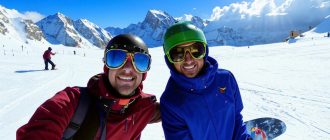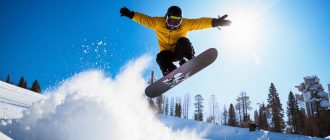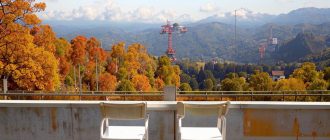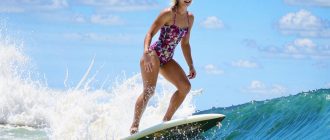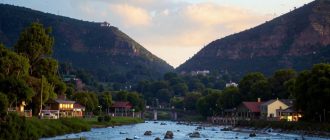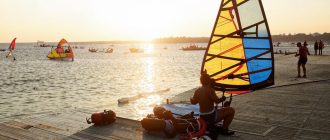Pictures of happy riders on the beach in t-shirts and shorts give the impression that sapsurfing is exclusively a summer activity. That hasn’t been true for a long time. Even snow-covered shores, not to mention the beauty of fall, can be surfed on saps. There are no official bans on riding in cooler weather, you can ride a sapa until the first ice.
So, if your soul asks for it, don’t limit yourself. But be sure to prepare and buy extra clothes according to our instructions.

Sportmaster PRO-expert
Tells about the necessary equipment and safety techniques of riding on the water in the fall.
Wetsuit
In the fall, the weather becomes unpredictable: even if you don’t fall off the sapa, you can get wet with sudden rain. That’s why the best investment for fall water training is a “drysuit,” or dry wetsuit. It is made of membrane fabric, and on the wrists and ankles there are dense rubberized cuffs that do not allow water to pass. Under such a wetsuit, depending on the temperature, the second layer is worn as tights and a T-shirt made of polyamide or polyester or fleece pants and a sweatshirt. On particularly cold days in late fall, a third layer is needed – thermal underwear.
Another option, more budget-friendly, but also wetter, is a neoprene wetsuit. It allows water to pass through, but you won’t freeze in it. Suits come in different thicknesses, and it is important to choose one that will keep you warm.
General recommendations: for 16-18°C – 1.5-2 mm, for 13-16°C – 2-3 mm, for 10-13°C – at least 3 mm, for 7-9°C – 3-4 mm, for temperatures below 7°C – at least 5 mm.
But you can check your feelings in the suit only after the purchase. So it’s better, as they say, to be too much than too little, if you have doubts, and take a model with a small thickness reserve. Under the “wet” suit does not need additional clothing, warm you will be warmed by the neoprene itself.
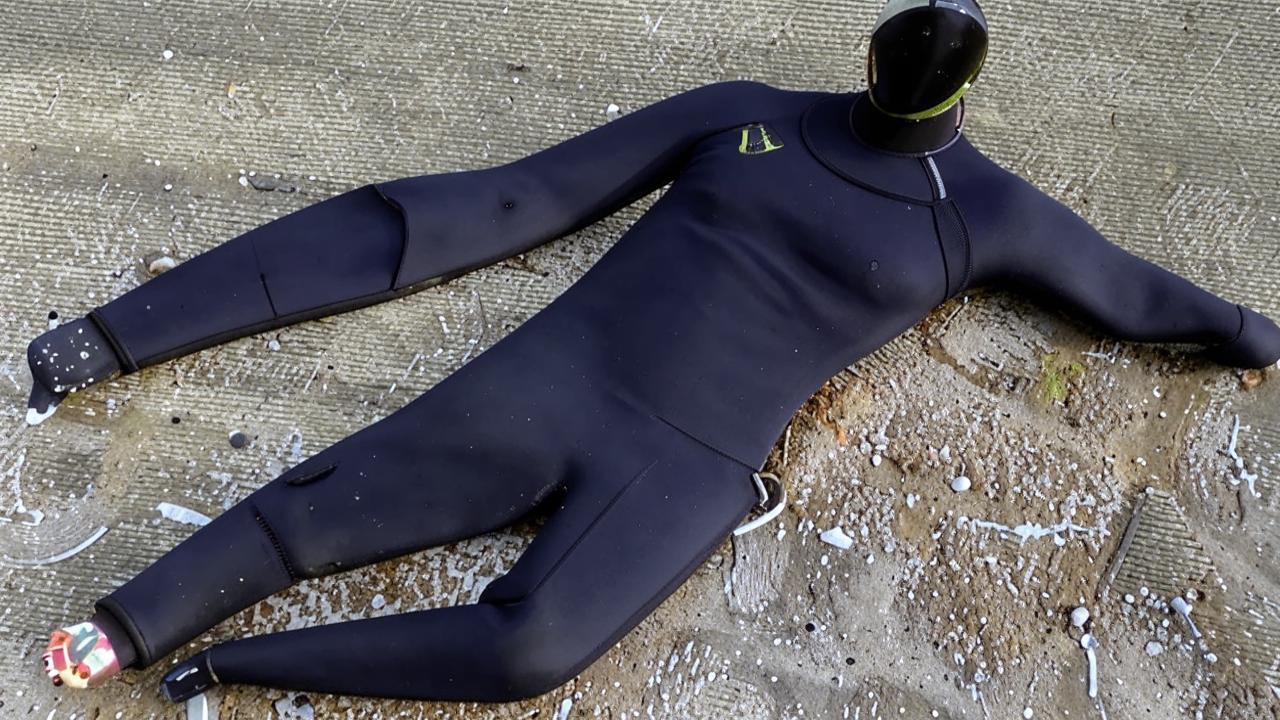
Lifejacket and a life jacket
It is unlikely that you are tempted by the prospect of finding yourself in cold water without a means of rescue and without a board. So if you haven’t bought a life jacket yet, it’s time to do so. Bonus – it will additionally warm the body. In addition, you need a lich – a special short rope that will connect the sap to your foot and keep it close to you in case of a fall.
Footwear
In the fall on the sapa, slates, sandals or Crocs alone are no longer enough. It is better to accept it at once, than when after the first hour of riding from the cold water and wind will start to get numb toes, because the feet practically do not move. And buy water shoes suitable for cooler weather in advance. There are two options to choose from.
Neoprene hydroboots for surfing and rafting. Do not forget that they should be the same thickness as the wetsuit. Such boots are comfortable with their rubberized toe and sole, which will minimally slip on the sap, even if the wind makes a little ice on it.
Water sports midsole boots. Now they are even easier to find in sports stores. In Russia, Outventure and Columbia have them, including models for children. They have a reinforced upper and slits through which water can drain. Such half-boots are doubly convenient, because they can be worn both in the fall and summer. Only in cool weather you need to wear neoprene socks under them.
Accessories
An incredibly important piece of gear. Without fall accessories, you’re bound to get cold and your riding will be ruined. So be sure to add the following to your shopping list:
- neoprene socks – protect your feet from cold and frostbite, wear them under your half-boots for water activities or additionally under neoprene hydroboots;
- neoprene gloves – protect your fingers from numbness in the cold wind;
- sports balaclava – will cover your head, throat and face at once, will not fly off from the wind, in very cold weather you can add a neoprene hat or a hat with windproof membrane;
- neoprene hat – in case of very cold wind;
- self-warmers, i.e. disposable warmers for feet, hands and body – put in shoes, glued inside gloves or put in pockets, can be found at Outventure (such warmers are suitable for dry wetsuit, in neoprene thermal reaction will end when wet);
- a flashlight and a waterproof case for it – it gets dark earlier in the fall;
- reflective bracelet and stickers on the paddle – to avoid collisions when it starts to get dark;
- a thermos – you will pour hot tea or soup into it to warm yourself not only from the outside, but also from the inside.
And, of course, don’t forget about a sealed bag, sunscreen if the weather is expected to be sunny, a snack if it’s going to be a long day on the water.
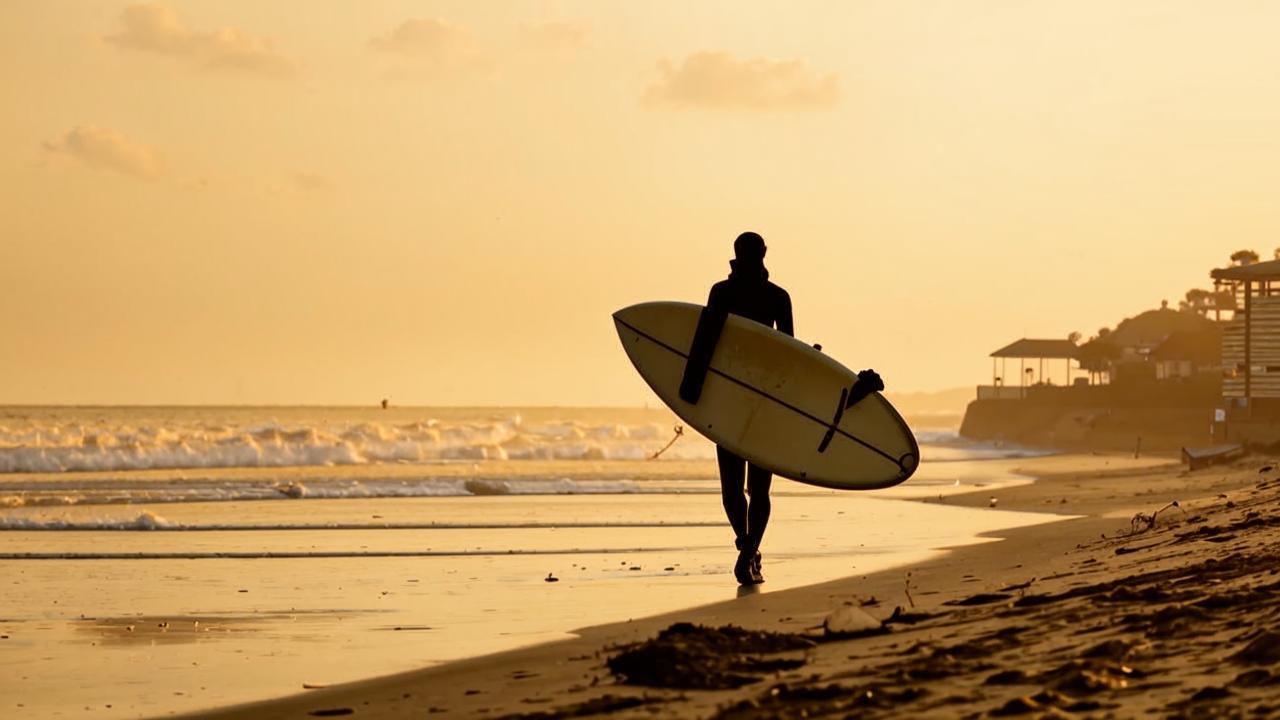
Safety precautions
In the fall, the water is not as harmless as in summer, and a more careful and attentive approach to riding a sapboard is needed. Always check the weather forecast before going out on the water: nothing spoils the ride as much as wind, rain or even drizzle with snow. Don’t ignore your senses – if you feel yourself freezing, it makes sense to go ashore and do a little exercise to warm up.
If you’re not yet a very experienced sappersurfer, finish when the temperature drops below 5-7°C. Unless you know how to get out of the water quickly, even one fall into icy water can affect your health. If you have experience, you can go skating even in winter on bodies of water with constant excitement, which do not freeze. In this case, you can’t do without a “dryer”, a layer of fleece and thermal underwear. And if you prepare responsibly, you won’t have bad weather for sledding. If you live in Moscow, we have prepared for you a selection of spots where you can ride boards with oars.

